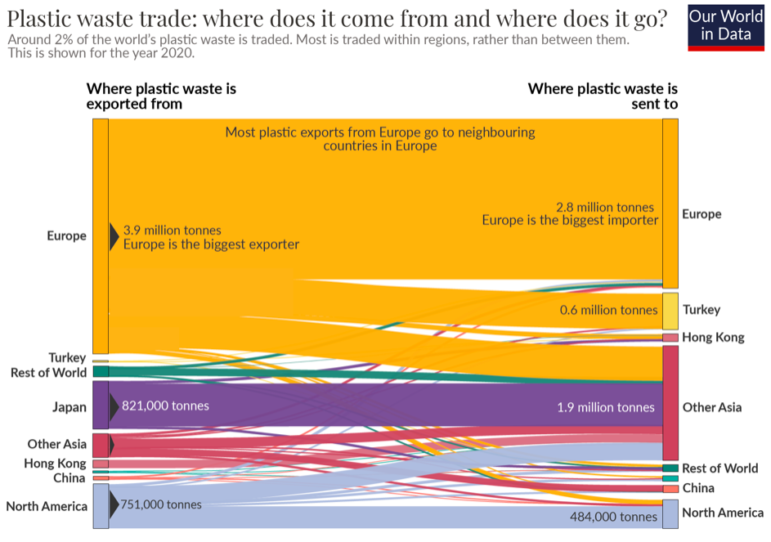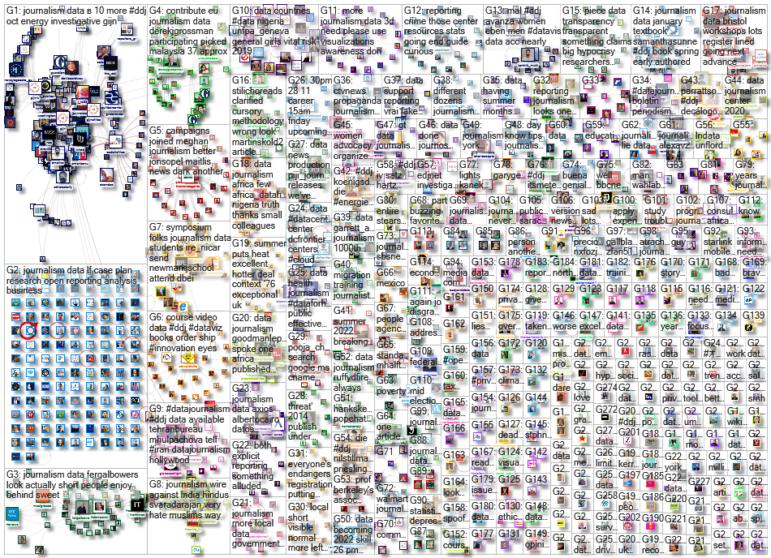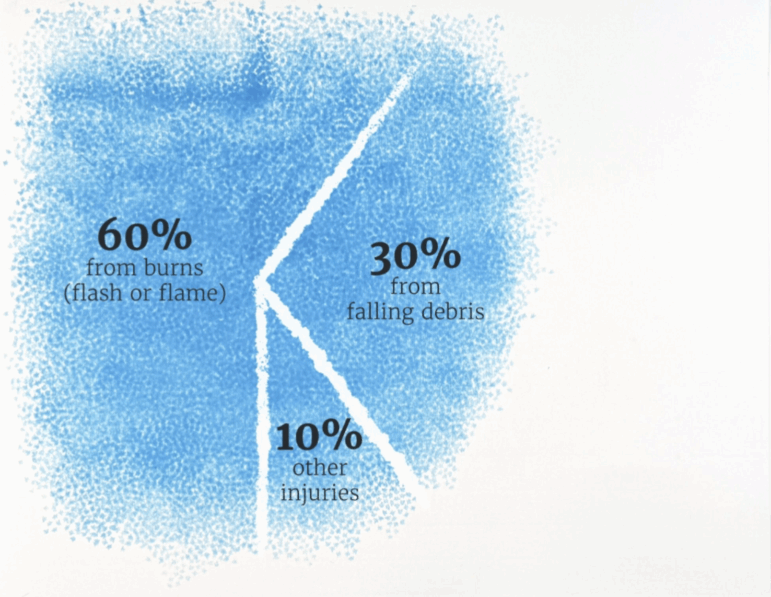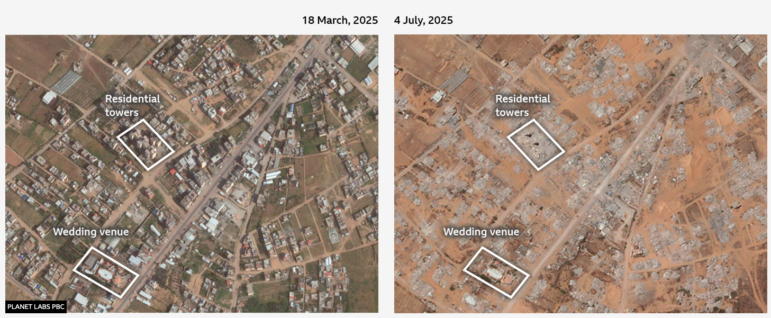

Image: KT
Data Journalism Top 10: Escaping Russia’s Mobilization, Xi Jinping’s Path to Power, Plastic Pollution, Data Journalism in Iran
Read this article in
In the United States, police need a court-approved warrant to search an individual’s home; so do workers for child protective services agencies. However, a majority of these child welfare case workers don’t obtain a legal entry order before entering homes. ProPublica and NBC News have investigated how this power is abused. Our weekly NodeXL and human curation of the most popular data journalism stories on Twitter also highlights Hungarian outlet Atlatszo’s mapping of teacher demonstrations, elDiario.es’ database of caesarean birth-delivery rates in Spain, Bloomberg’s analysis of Chinese president Xi Jinping’s rise to power, and data analyst Channon Perry’s attempt to find a meet-cute story with Google’s location data records.
Child Welfare Policing
According to US government data, child protective services agencies in the country inspect the homes of some 3.5 million children a year without a warrant. ProPublica and NBC News found that only 5% of these unilateral searches resulted in discoveries of physical or sexual abuse of a child. The two newsrooms dug deeper into these incidents in New York state and discovered that Black and Hispanic children are disproportionately subjected to these humiliating visits, in which their parents are “rendered powerless and turned into second-class citizens in their own homes.” Journalists also took a look at how laws for mandatory reporting of child abuse were ineffective and tend to punish poor families.
Mapping Teacher Protests
Thousands of Hungarians repeatedly took to the streets this month to protest low wages and poor working conditions in schools, and to show solidarity to teachers fired for allegedly participating in public protests on the same issue. Using data collected with the help of parents in the country, the data team at Hungarian investigative outlet Atlatszo mapped the educational institutions that have published supporting statements or organized strikes in support of this movement.
Political Falsehoods
The 2020 US presidential election saw Joe Biden, a Democrat, defeating the incumbent president, Donald Trump, a Republican. The results of that vote, however, have not been accepted as legitimate by an outspoken cross section of right-wing voters and political leaders. By scouring the public records of more than 550 Republican candidates in all 50 states, and examining their social media accounts and public political messaging, The New York Times found that more than 370 Republican candidates for the upcoming midterm elections have spread misinformation, or expressed skepticism, about the outcome of the 2020 election. Many of those candidates questioned Biden’s win as recently as in the last couple of months.
Caesarean Delivery Rates in Spain
Spain’s Ministry of Health released a decade’s worth of anonymized data on birth deliveries and caesarean sections, or C-sections, from every hospital in the country. To find out which data corresponded to which hospital, online news site elDiario.es cross-referenced the information with public reports, press releases, archived web pages, and more. It then created a searchable database where readers can find the c-section rate for 360 public and private hospitals across Spain. The reporters also found that 28 hospitals had a C-section rate of more than 45%, triple the rate recommended by the World Health Organization.
Xi Jinping’s Path to Power
The Chinese Communist Party’s national congress began on October 16 and ends Saturday, October 22. By analyzing almost 1,300 appointments to the party’s Central Committee since 1992, Bloomberg News explains the factors that contributed to Xi Jinping’s consolidation of power in the Chinese Communist Party over the years — which include purging members through a far-reaching anti-graft campaign and filling seats with older officials and loyalists.
Tracing the Journey of a Sports Star
Samantha Kerr, a prolific professional player of football (that’s soccer to you Yanks) from Australia, is widely lauded as one of the best female players in the world. She has been nominated for, and has won, many national and international awards for the sport across continents. ABC News takes a look at the evolution of her game by tracking down footage of most of her 257 professional goals to date and analyzing her winning technique.
Plastic Waste Trade Pollution
Where does the plastic waste in our world’s oceans come from? Existing research would suggest that rivers in Asia are mostly to blame, but the findings may not take into account the practice of exporting waste, which might obscure its real origins. Hannah Ritchie, head of research at Our World in Data, examines the data and finds out how much rich countries actually contribute to plastic pollution of the oceans through exporting waste.
Escaping Russia’s War Mobilization
Since Russian President Vladimir Putin announced a partial mobilization of the country’s inactive military, a black market to help reservists escape army duty in exchange for cash has thrived. Novaya Gazeta Europe studied thousands of such black market offers on Telegram and in specialized forums and spoke to some brokers to identify the eight most common services offered and how much they cost. The methods range from providing fictitious HIV-positive medical certificates to fake college enrolment papers.
How I Could Have Met My Partner
Channon Perry, a data analyst, attended the same university and lived in the same city as her current boyfriend for five years. But they never met in person until they connected online through a dating app. She wondered how many times, and where, they could have potentially bumped into each other in real life over those five years. Using Google’s location history and a bit of coding, she now has the answer. This clever piece, though published in August, is still making the rounds on Twitter and was highlighted by data and technology leader Giuseppe Sollazzo in his recent newsletter. Bonus: you can replicate the project to find out how you could have met your partner, too!
Data Journalism in Iran
Protests have rocked Iran since the suspicious death of 22-year-old Mahsa Amini last month in the custody of the nation’s morality police. DataJournalism.com spoke with Marketa Hulpachova from Tehran Bureau, an independent investigative outlet focusing on data journalism, about doing data stories in such a challenging environment. Also, check out this Tehran Bureau piece, which uncovered six China-based companies that sold surveillance technology to Iran’s government.
Thanks again to Marc Smith and Harald Meier of Connected Action for gathering the links and graphing them. The Top Ten #ddj list is curated weekly.
 Eunice Au is GIJN’s global team manager. Previously, she was a Malaysia correspondent for Singapore’s The Straits Times, and a journalist at Malaysia’s New Straits Times. She has also written for The Sun, Malaysian Today, and Madam Chair.
Eunice Au is GIJN’s global team manager. Previously, she was a Malaysia correspondent for Singapore’s The Straits Times, and a journalist at Malaysia’s New Straits Times. She has also written for The Sun, Malaysian Today, and Madam Chair.










